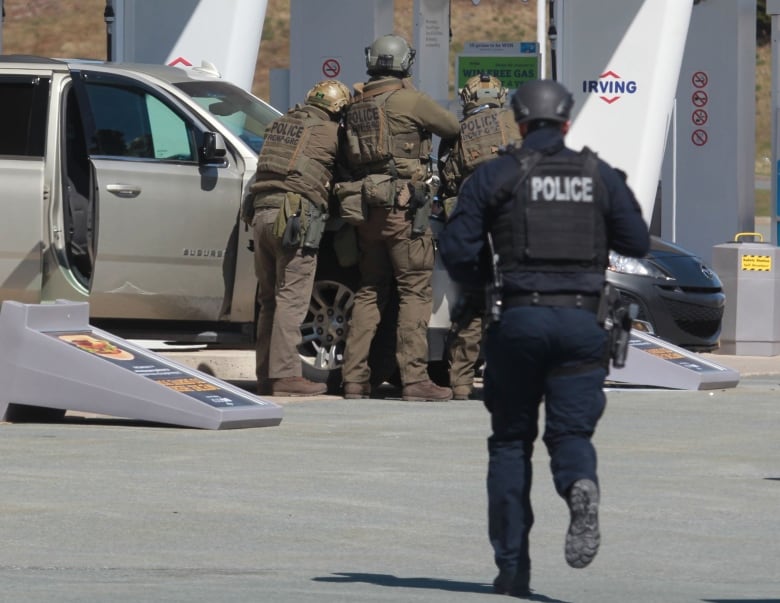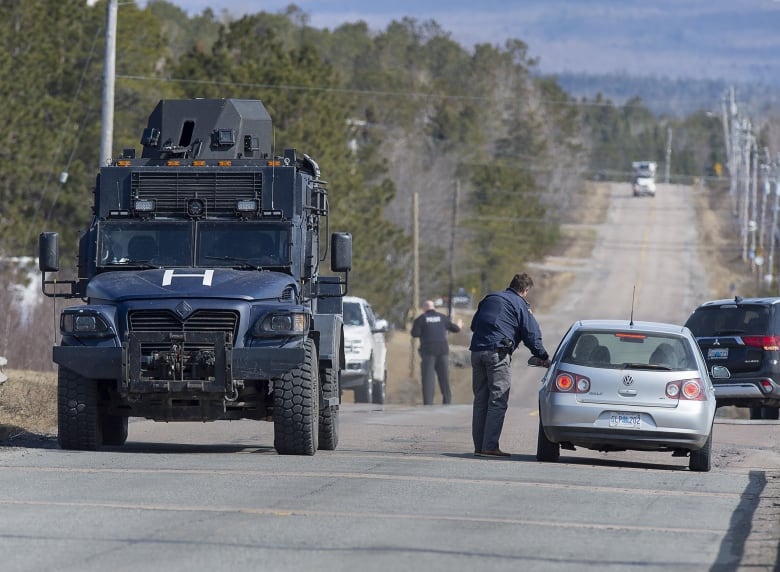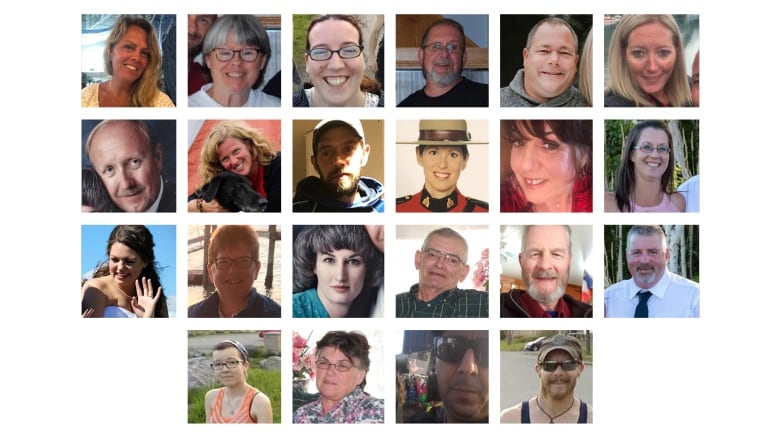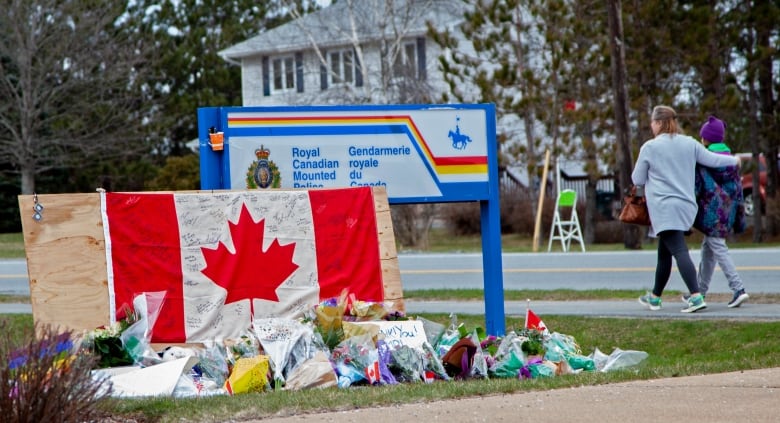
The leader of the Nova Scotia RCMP’s tactical team left the force in frustration six months after responding to the mass shooting that started in Portapique, N.S., and told lawyers for a public inquiry the “abuse” inflicted by his employer was worse than the “war zone” his team faced during the April 2020 massacre.
“I don’t expect upper management to fight us and abuse us … to treat us the way they treated us after I gave the best I could give,” Tim Mills said in a September 2021 interview with Mass Casualty Commission lawyers and staff.
On April 18-19, 2020, Mills was the leader of the 13-person Emergency Response Team (ERT) that responded to high-risk situations across Nova Scotia, except in metro Halifax and the Sydney area.
The work usually involved racing to crime scenes in the middle of the night. Though they trained to deal with active shooters like the one in 2014 who killed three Mounties and injured two more in Moncton, N.B., Mills said they were more often dealing with armed people who needed to be contained and talked down.
In Portapique and then Glenholme, Debert, Shubenacadie and Enfield they faced an unusual situation — carnage spread over a large area and a gunman on the loose who was speeding between communities killing people at random.
While pursuing the shooter in the direction of Halifax, Mills came upon the body of his slain colleague Const. Heidi Stevenson and learned from a witness the gunman had just fled in another victim’s SUV. Within half an hour, one of the tactical officers and a dog handler he was travelling with shot and killed the shooter after recognizing him at a gas station.

“Moncton was bad, really bad. This was ten times worse than Moncton…. It was a war zone,” the former corporal said in his interview.
Mills said he was proud of the way his team responded with the tools and resources they had. But he also highlighted challenges including being short-staffed, having no overnight air support and not having the technology to locate tactical team members in the dark subdivision where the violence started.
He said that the RCMP’s management never checked in personally in the days that followed and did not back up promises to support his team’s mental health, refusing to give the part-time tactical officers more than a few days away from their regular shifts to decompress.
Short-staffed team
When the call came in to rush to Portapique that Saturday evening in April, Mills said his team was operating five people short of what would be ideal or recommended — with just five full-time members and eight officers who worked part-time in addition to doing their general duty shifts.
Because of that, Mills said he decided to stay with the group as an extra body on the ground instead of doing tactical operations and working alongside the critical incident commander overseeing the response from the command post, as team leaders normally would.
“I won’t be able to see where everyone is, I won’t have a good picture of what’s going on, I’m going to stay embedded with the team,” he explained of the decision to inquiry staff.

Technology was another factor, he said, because the ERT team could not pinpoint each other’s locations.
In the past, Mills said they had access to software that could be opened on their phones or in a command centre and would map out icons showing where members and their vehicles were positioned. They could insert an address so people could see where it was in relation to their position.
“If you contained a house, here’s where your snipers are, here’s where everyone is, and it was great,” Mills said.
He said his team started using one app sometime after the Moncton shootings but “the app just went to the wayside and wasn’t updated” and though they used another version for a while, they lost the technical ability to do so a few weeks or months before Portapique. They still had the devices but they were no better than “paperweights,” Mills said.
“To the lay person, sounds like a pretty fundamental piece of information for an Emergency Response Team to know and access proper mapping,” said commission counsel Roger Burrill in the interview.
“Bingo, hundred per cent. We preached that and it fell on deaf ears,” Mills replied. “It caused delays in locating addresses and … getting the lay of the land for sure.”
That April night they were “definitely cursing” their inability to map and track, he said, and afterward they installed a mobile workstation with GPS in one of the ERT vehicles.
No eyes in the sky
Among their issues was the fact that they couldn’t access an aircraft overnight. The RCMP helicopter in Moncton was down for maintenance, a scenario that was more common than not, Mills told the inquiry.
“The sad thing is, no, I wasn’t expecting anything because it seems 80 per cent of the time you call air services, ‘Oh well, it’s down,’ or ‘We’ve got too many hours in’ or this or that,'” he said. “You can just tell they’re overburdened, too… They don’t have the manpower to keep up with the demands.”
He said the ability to locate heat signatures from above would have helped locate Clinton Ellison, who called 911 while hiding in the woods after discovering his brother’s body. It also could have helped locate the gunman’s spouse, Lisa Banfield, who hid in the woods for hours after escaping from her partner’s violence.

The importance of air support isn’t a new idea. It was addressed in several recommendations stemming from the Moncton shootings, including that ERT conduct night training exercises with RCMP Air Services and that during large-scale events, air services be used with trained personnel assigned to command posts.
“It’s invaluable and it was identified as invaluable before,” Mills said in his interview. He said a helicopter made a huge difference later in 2020 when his team was called to search for a fugitive in Bridgewater and it helped them locate a missing teen in Cape Breton.
No relief for part-time ERT members
Looking back, Mills said he was most frustrated with how the RCMP handled his team in the weeks and months that followed the mass shooting.
He said the ERT team from New Brunswick, who he’d initially called at 6 a.m. on April 19 so his team didn’t get burnt out from a 24-hour shift, covered their calls for a few days after the shootings. But by the following weekend the part-time members of the ERT team were expected to go back to their regular general duty shifts at various detachments. Some of them came to him and explained they needed more time.
Meanwhile, he said no one from upper management reached out in the early days.
“Not one person from management has come down to check on us, thank us, you know, Are you OK? Nothing. We’re in the same building,” he said.
Worried about his team’s mental health, Mills said he requested his team be seconded in a psychological debriefing on April 24, 2020, saying he approached it as a chance to assign them to ERT-related desk work that needed to be done anyway as opposed to sending them out to deal with the public and scenarios like writing COVID violation tickets.
“We’ve been through war. They’re looking for two weeks to decompress,” he said in his commission interview.
The calls weren’t stopping either. The entire RCMP tactical team was called to a weapons complaint that resulted in the province’s first police-related emergency alert hours after the briefing.
Many on team felt ‘defeated’
Despite making the request, Mills learned the part-time officers were still expected to show up for their regular shifts the following day — a week after the shootings — and he said he didn’t get any support from people who told him they’d assist.
“I’m like, are you f—- serious? You know, they’re actually fighting us on something so simple,” he said.
As a result, he said five ERT members went off sick because they felt “defeated.” That caused tension within his close-knit team because some members felt they’d face repercussions if they did the same.
Mills told the commission he filed an internal complaint about his team’s treatment that was not followed up for months. He felt his own integrity was questioned when he brought up the assurances people, including psychologists, initially made. CBC has reached out to the RCMP about the status of that complaint and to respond to his concerns.
In all of 2020 the ERT team was called to 70 incidents, about double as many in previous years, which Mills attributed in part due to extra caution and concern following Portapique. But he said it wasn’t that work that got to him. He said amid the internal turmoil, he began to struggle with not being able to sleep. Finding it “mentally exhausting,” he decided to retire.

“I’ve been to gun complaints, I’ve been to Moncton, I shot people before, you know, I’ve taken a life, like that is my job, I can deal with it … you’re fighting a war for the people,” he said, adding that he wasn’t bothered by criticism from the media and the public but said the treatment he experienced from upper management was worse than anything he endured during his years of service.
After eight months leave, he officially left the RCMP, “frustrated beyond,” in July 2021 after 29 years.
Mills, who now works for Nova Scotia’s Department of Justice, declined an interview but told CBC that he has always wanted to testify at the inquiry.
In March, the commission said it would reconsider calls from families’ lawyers to call him as a witness when a document summarizing the Emergency Response Team’s role is presented in mid-May












